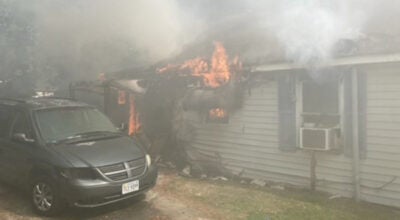Rain, rain (won’t) go away
Published 10:41 pm Wednesday, March 3, 2010
If you feel like the rain and snow just won’t stop, don’t expect a change anytime soon.
Suffolk has experienced more snow this winter than in previous years and, over the past 12 months has seen weather that is much wetter than normal.
And, according to the National Weather Service more rain is likely on the way.
“We’ve had a wet summer, fall and winter and it looks like the storms will continue through the spring months,” National Weather Service meteorologist Mike Montefusco said.
This most recent rain and snow event, which began Tuesday night and lasted through Wednesday morning, caused 18 weather related vehicle accidents between 3:30 a.m. and 7 a.m.
During the winter months thus far, the area has had nearly nine and a half inches of snowfall. Eight inches is the average for the Suffolk area.
The reason it may feel like there’s been more snow than usual is because the winter has been fair in recent years.
“So while people may feel we’ve had more snow than normal, it is right around the normal number,” Montefusco said. “We’ve been very much spoiled the past few years, because we haven’t had snowy winters. The snowfall here is highly variable. We’ve had winters with 30 to 40 inches of snow and others where we have nothing.”
For the past 12 months, from March 2009 through Feb. 28, the area has received 69.6 inches of rain.
“Record rainfall for a year (January through December) was in 1979 with 64.96 inches of rain,” Montefusco said. “If the last 12 months were a standard year, we would have set a record.”
As it was, 2009 nearly set a record with 64.66 inches of rain — just shy of 1979’s record.
“We’ve seen a pretty reliable storm track of systems developing in the gulf coast and wind its way up the southeastern coast towards our area,” Montefusco said.
He attributed much of the rain and snow to the Pacific’s moderate El Nino weather patterns, which occur every five to six years.
“There have only been nine since 1950,” he said. “What it does is cause a ribbon of warmer waters off the west coast of South America. It means clearer conditions over that area, but creates storms that ride up toward North America. Those systems move toward the southeast United States and wind up to us.”
While temperatures are expected to reach above normal temperatures this weekend and reach the 60s on Sunday and Monday, the area will likely see more precipitation next week.
“Right now, it’ll be a lot of plain ole rain,” Montefusco said. “It looks like the moderate El Nino patterns will persist into spring months. We’ll have above normal precipitation for at least the next 30 days and probably the next 90 days.”






